Once again it was time to tackle Otago Peninsula’s Paradise Track, which on my last visit had yielded so much material that it took two posts just to get halfway down the hill. First I’d noticed the ruin of Donaldson’s hotel at the top of the track, then I’d got distracted by puzzling out the mystery of the Sanderson farm, and finally I’d reached the famous Paradise Farm.
Today I was on the trail of Beattie’s farm, which I’d heard featured a brick ruin that was rapidly deteriorating. There was no time to be lost if I wanted to document it!
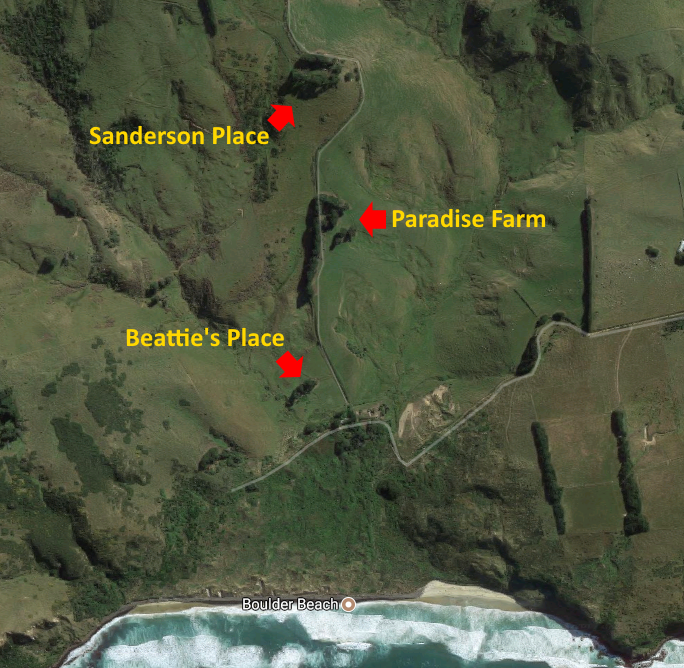
We set off on an indecisive day, featuring periods of rain and drizzle interspersed with moments of uncertain sunshine. We crossed our fingers as we navigated Highcliff Rd, hoping that the weather would favour us during our exposed walk down the seaward side of the ridge.
We passed Buskin Rd which provides another route to Boulder Beach (as long as you don’t get lost!), and parked opposite the start of the Paradise Track. I nodded knowingly at the remains of Donaldson’s hotel as we began our journey. We checked the kotukutuku for berries but none were ripe, although we did find a couple of blackberries to savour as we approached the Sanderson place.
Passing by, I spared a thought for Mrs Sanderson, her daughter Sarah who lived only three years, and her sons Duncan and Alexander, one of whom was killed in action in Belgium and the other who avoided the war but could not escape the flu epidemic which followed.
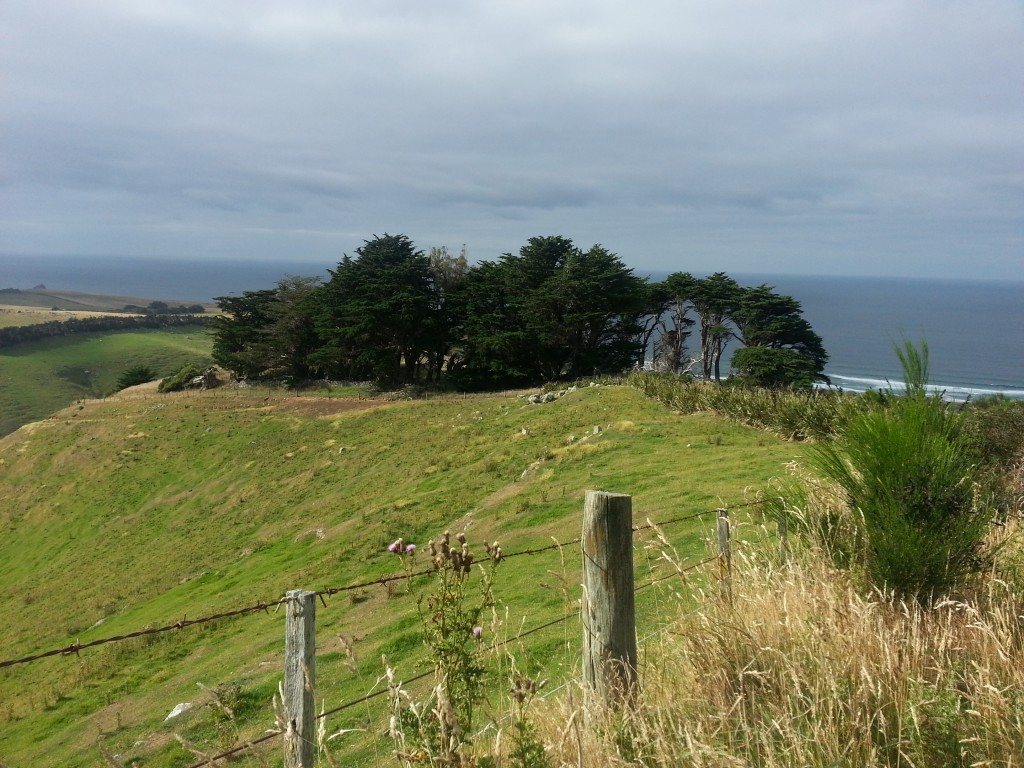
Beyond the Sanderson place and through the flax-tunnel was Paradise Farm, with its two piles of bricks to attest to the five-roomed dwelling which had once stood amongst the macrocarpas. From here we could now see the next clump of trees below, where Beattie’s farm is said to be found.
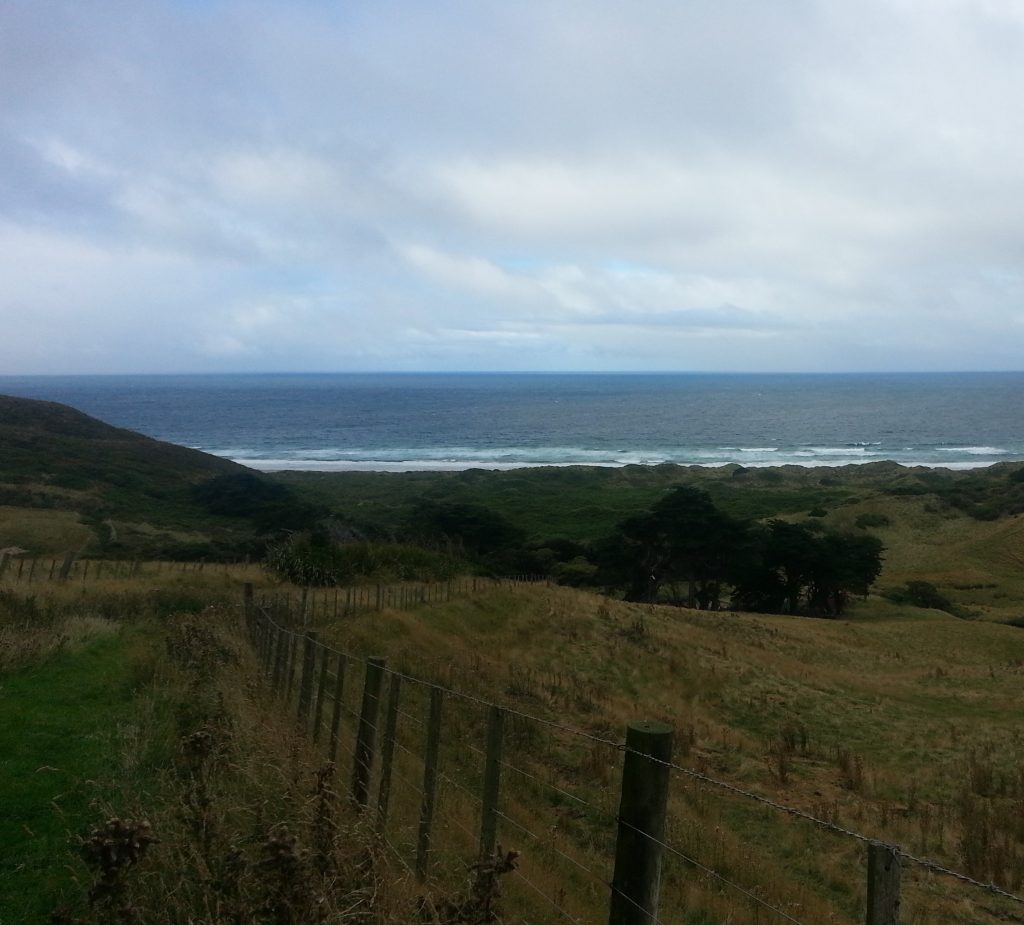
Forgetting about Paradise Farm, we hurried down to discover what relics lay behind the tall row of wind-carved trees. Drawing even with the site, we were not disappointed, for there indeed stood a rickety brick ruin begging to be investigated. We walked through the open gate down what once must have been the road on to the property that was once known as Springbank, on account of the several springs it contains.
James Beattie, who bought this section in 1863, was of Irish extraction but had been a miner in Australia and America before moving on to New Zealand. He’d seen many droughts in his time and so was determined to settle somewhere with a good water supply.
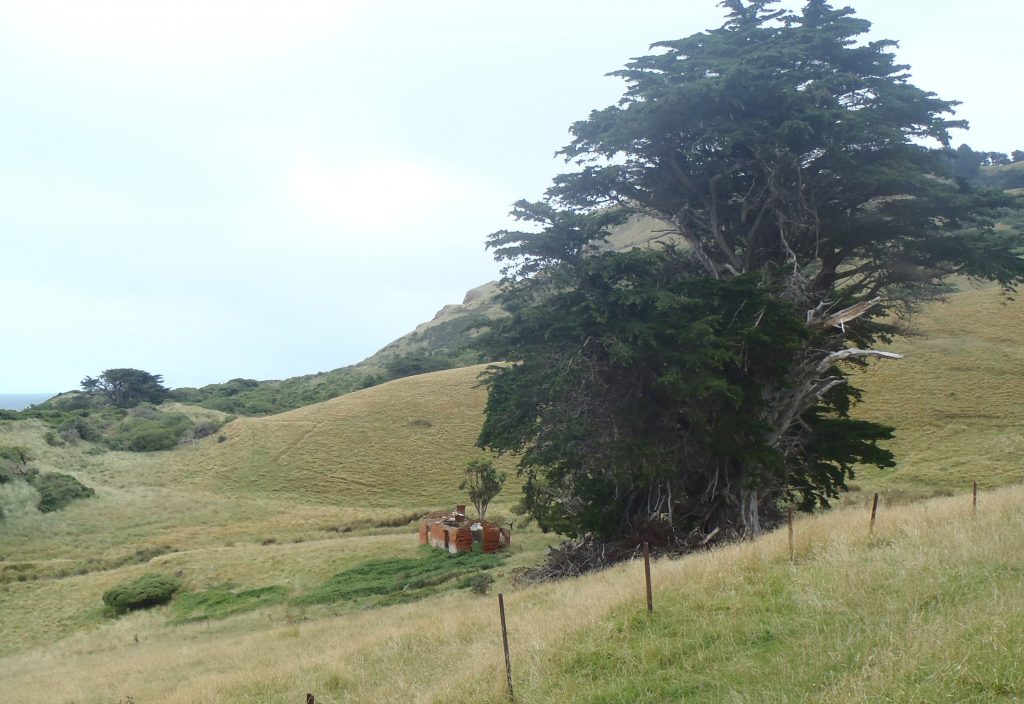
His first house was a wattle and daub structure near the creek below, but that was perhaps too damp even for James, and he moved up to this spot, building four rooms in wood. Later, he added four more rooms of brick, and that is what remains today. Approaching the dwelling, we discovered we had arrived in the nick of time, as the structure was indeed in a precarious state – a good gust of wind might knock it down!
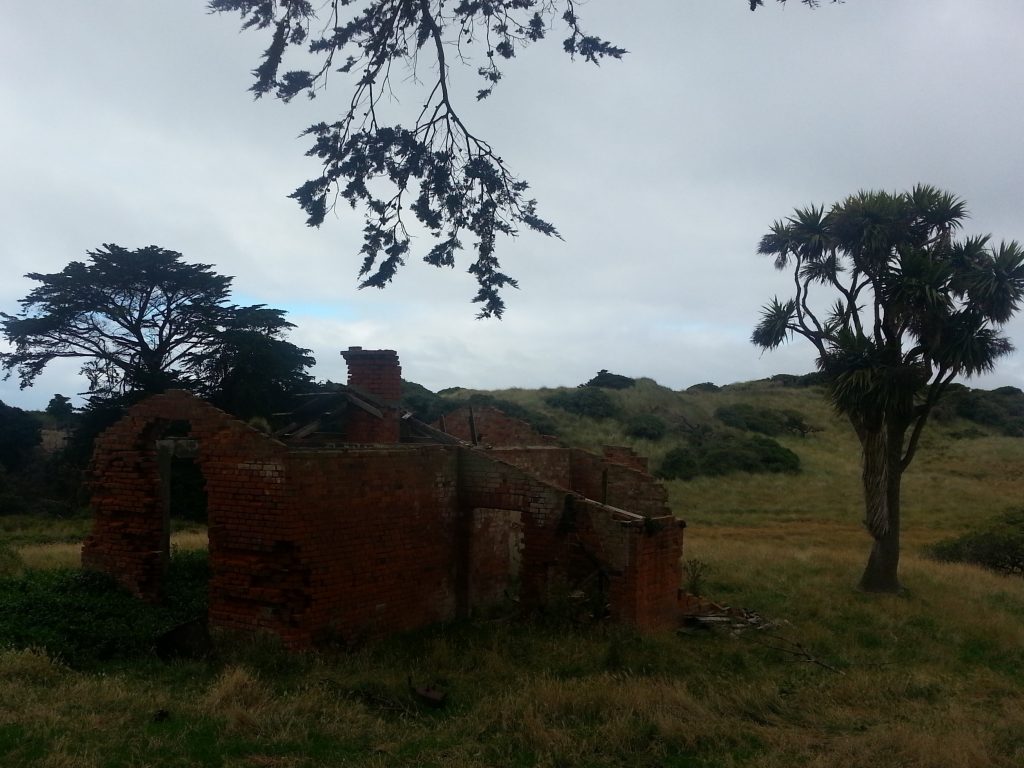
But a house is only half of what James needed to make a home – he was also in want of a wife! Luckily the solution to early Dunedin’s woman shortage was at hand, as the Arima arrived from Glasgow bearing a cargo of 90 single females. They were hustled to the immigration barracks amidst much speculation about their quality of character. Would the feminine horde ruin the reputation of our fair city by turning to drinking and prostitution and leading our good men astray?
James on the other hand knew a good opportunity when he saw it, and was soon courting one of the lasses, who also hailed from Ireland. By all accounts Margaret Ann Whiteside was a religious and tidy woman, quite the opposite of what the scaremongers predicted. She was also a dab hand at making butter, both the regular variety and “fancy” butter, often raking in prizes at Peninsula A&P shows.
1863 was a busy year for James. The Arima arrived in March, he was married in June, and purchased his farm in December.
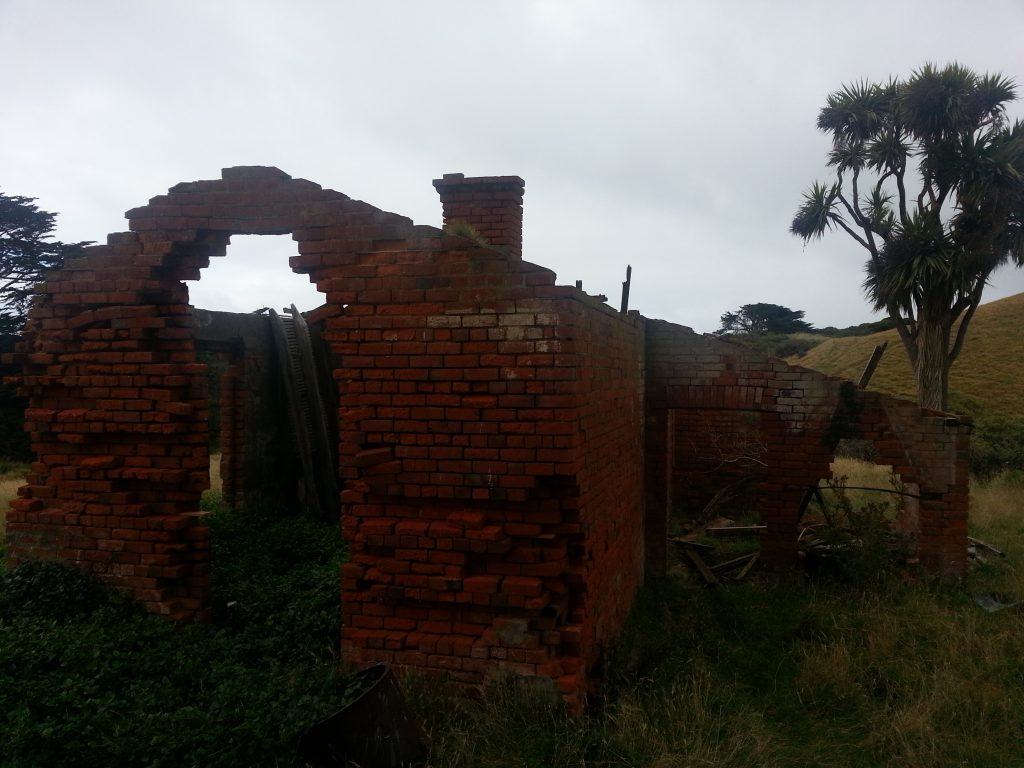
James is credited with introducing rabbits to the Peninsula, which may explain why he was so upset one afternoon in 1871 to discover Andrew Duckworth on his land carrying five newly-shot rabbits. After coming off the worse in a tussle with one of Andrew’s companions he returned with a double-barrelled gun and took the rabbits for himself. Though his victim took him to court the charges of assault, robbery and threatening to shoot did not stick as the judge concluded James had every cause to believe the rabbits belonged to him, despite Andrew’s claim that he had shot them elsewhere.
One other dispute James was involved in is interesting if only because it involves a character we have met before. James engaged Edwin Tanner to carry out some surveying on his property – you will perhaps recall Edwin as a saviour of rimu trees at Craigieburn, whose surveying prowess was also called upon during the neighbourly dispute at Nicholls Falls. In this case James had refused to pay for the work as he felt it was not accurate, and also charged Edwin with assault and trespass. It seems James was not one to back down when he felt he was in the right.

James later turned the same efficiency he’d demonstrated when arranging his own personal affairs to securing the future of his children. On this very lawn in 1887 a triple marriage took place in which his three eldest children were hitched. James, his only son, married Hannah Jane Black, while his daughters Anna White Dalrymple and Mary married Joseph Black and John Jury respectively. It was a grand community event with the brides dressed in coffee coloured silk and a cake baked in the camp oven.
James had five further daughters, although poor Emily would survive only to sixteen. He sold his 15 cows and other farming paraphernalia in 1900, having leased his farm, and passed away in 1906. Margaret followed in 1917. What became of Springbank afterward I’m not sure.
Having managed to see Beattie’s home while it still stands, there was still time for me to pay a visit to my favourite place – Boulder Beach, or as it had once been known, Beattie’s Beach. So it was back to the track and then down over a final stile and through the dunes.

Upon entering the beach we did indeed find ourselves clambering over a section of large slippery stones, but they soon gave way to the fine pale sand which merges into the misty distance beyond.
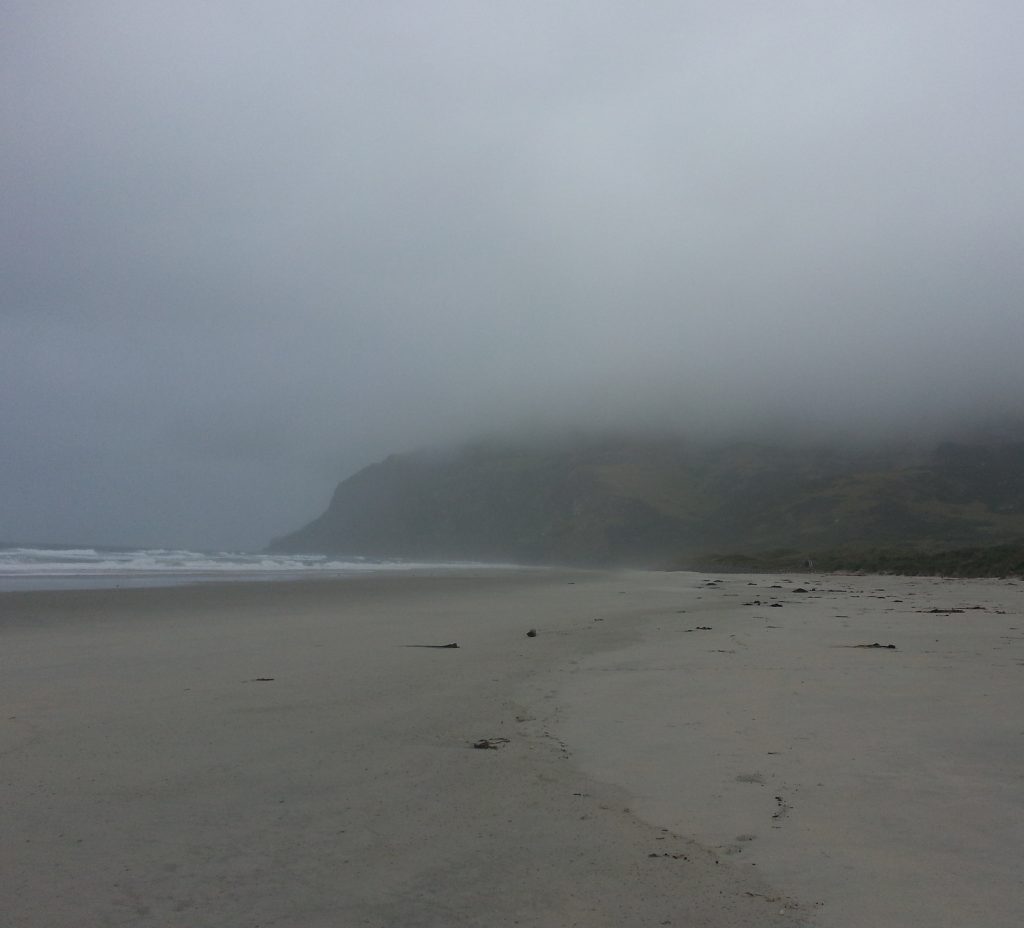
We headed for the cliff at the end of the beach only to suddenly discover it was not named Seal Point for nothing. We had alarmed one of its marine denizens, who rushed around us and out to sea.
Feeling like intruders in this isolated place, and with the cold rain intensifying, we decided to retreat. It was a steep climb up the track, back past Beattie’s, past Paradise Farm, past the Sandersons’ and finally past Donaldson’s Hotel before we reached our vehicle.
So now I’ve fully documented the Paradise Track, where to from here? There’s no need to worry, for I’m certain the Otago Peninsula has many more secrets yet!
References:
Otago Peninsula by Hardwicke Knight
Shipping Intelligence. Otago Daily Times, Issue 390, 21 March 1863
MR HARRIS AND FEMALE Otago Daily Times, Issue 393, 25 March 1863
MAYOR’S COURT. Evening Star, Volume IX, Issue 2700, 12 October 1871
HIGHCLIFF. Otago Witness, Issue 1863, 5 August 1887
RESIDENT MAGISTRATE’S COURT Otago Daily Times, Issue 5908, 15 January 1881, Supplement
RESIDENT MAGISTRATE’S COURT. Otago Daily Times, Issue 5997, 30 April 1881, Supplement
Page 8 Advertisements Column 2 Otago Daily Times, Issue 11825, 30 August 1900
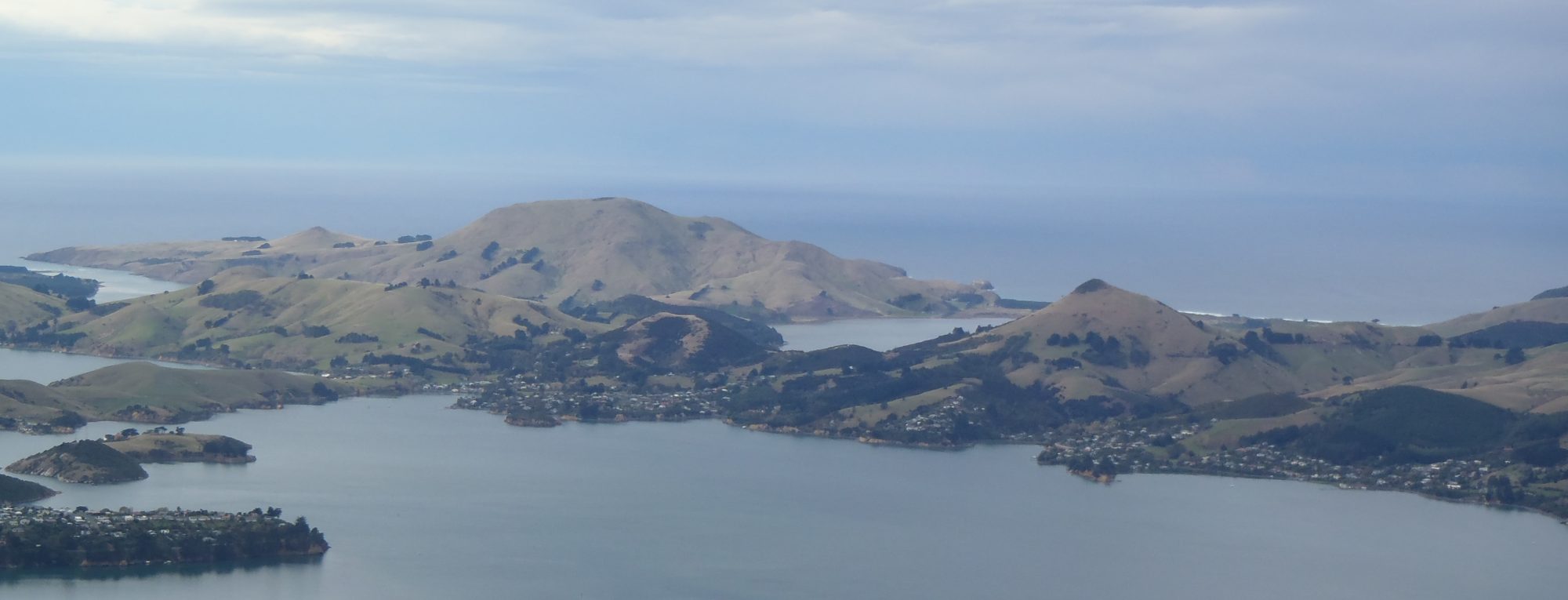


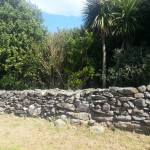
A good yarn, thanks.
John
Lovely to read about my family and see photos thankyou
Denise
What tourist attractions are there?
What about Beatties Cottage down at the intersection of the 3 tracks, you would have passed it to get to the beach?
Hi Rachel would you mind me contacting you about the Beatties cottage. I would like to visit it
Good article, thanks for sharing, please visit
our website
Wahh! Cool Article! Thank you for the Information!
Curious about the super cool Polinema Campus?
Visit here
such a beautiful place to visit!
wonderfull
nice info